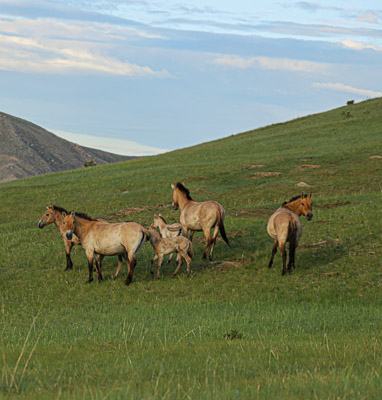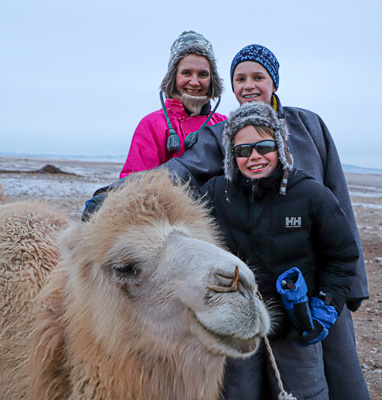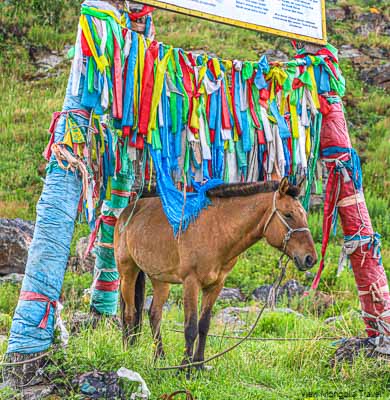Hustai National Park
Hustai National Park is located 100 km southwest of capital Ulaanbaatar city, covering over 50,000 hectares of area. More than 50% of the land is mountain steppe, which lets its visitors feel what is the real mountain steppe is. The Hustai protected area was established in 1993, a year after the first successful reintroduction of wild horses or Przewalski horses in their wild homeland. Przewalski wild horse name came after Russian Geographer (Polish origin) Nikolay Przhevalsky, who first discovered the wild horse during his central Asian research in 1878.
The only still-living wild ancestor of the domestic horses, the Mongolian wild horse is called Takhi in local language; those once roamed through Mongolian vast-open territory became extinct in the wild by the end of the 1960s. Human population expansions to their land, overhunting sometimes for food, poaching, drought or rainless summer, and severe winter were some of the reasons for the wild horse extinction. Anyway, there were some Takhi horses in the captive zoos and private collections of individuals in the western countries.
First, 15 Takhi wild horses were reintroduced to Mongolia by the initiation of the Holland-Mongolian joint project in 1992 followed by more transports from foreign countries, reached the total number of 84 heads.
The reintroduction and conservation in Hustai National Park was a success. At present, 350 wild horses are roaming in the wild nature of Hustai National Park. Mongolian wild horse habitat Hustai National Park is one of the well-protected areas, managed by the Mongolian Association for the Conservation of Nature and Environment between 1993 and 2003, and a dedicated NGO (Non-governmental Organization) Hustai National Park Trust since 2003.
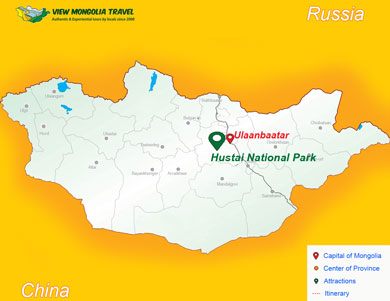
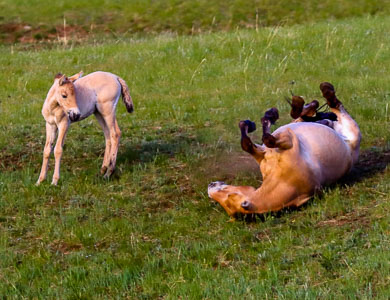
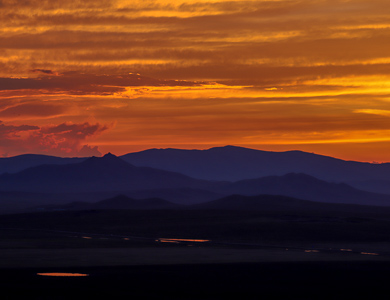
Hustai National Park is not the only wild horse habitat. Good management and good protection contributed to the increase of other wild creatures such as red deer, roe deer, marmot, wild boar, wild sheep, gazelle, grey wolf, and red fox.
The area is home to 459 species of vascular plants, 85 species of lichens, 90 species of moss, 33 species of mushrooms, 44 species of mammals, 217 species of birds, 16 species of fish, 2 species of amphibians, and 385 species of insects. The Przewalski horse is not just a wild Mongolian horse. They are genetically different from the domesticated horses, with 2 extra chromosomes. The wild horse has 66 chromosomes while the domestic horse has 64 chromosomes.
In terms of appearance, the wild horse is yellowish, with a dark mane and tail and, usually, a dorsal stripe. Its neck and legs are shorter, the body is approximately 210cm to 250cm long with 140cm to 146cm shoulder height and weighs 300kg to 370 kg on average.
A day tour to Hustai National Park is available. However, we suggest you stay overnight in the park as the chance to see the wild horses is most likely at dusk and dawn. As well as, enjoy the ger experience.
The public bus does not go near the national park. Therefore, take a package tour or hire a car.
In the national park, stick only to the existing tracks and stop at the road parking spots to watch the wild horses. Hiking in the national park core zone and approaching the wild horses are prohibited. Entry to the parking area costs approximately 10$.
The camping is not allowed inside the national park area.
Besides the wildlife and landscape, Hustai National Park also protects conservation values of historic significance. There are deer stones, burial sites, and stone carvings ranging in time from the Bronze Age to the 6-8th century Turkic Khaganate. Among the historical features, Turkic Khaganate Ungut monuments are spectacular as it has the most numerous collections of stone figures in central Asia. The location of Ungut monument is 38 km from Hustai ger camp. Therefore, consider your timing. Horse riding and hiking out of the national park core zone are the options.
